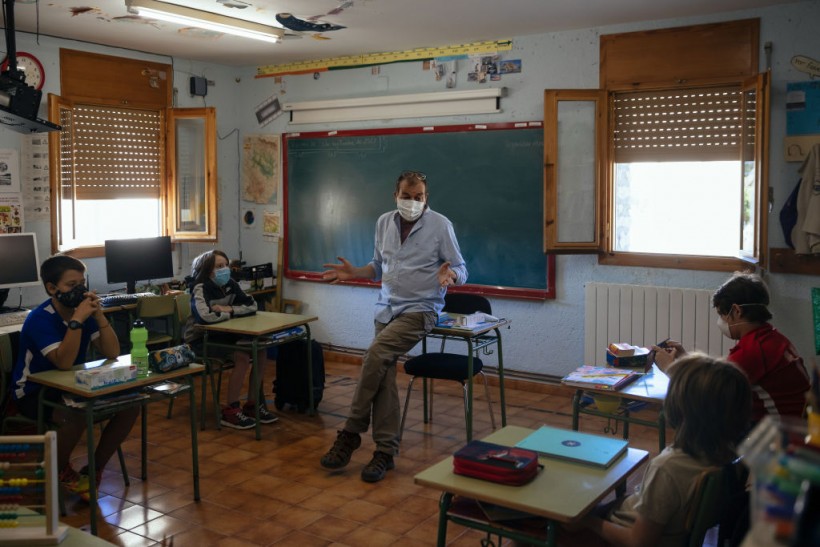As school instructors nowadays continue to wear masks for safety, the question is which type of face masks would allow for the most appropriate speech intelligibility. After all, being understood has a huge effect on teaching and education.
With the masks' ubiquity because of the COVID-19 pandemic, understanding speech has turned out to be a struggle.
This particularly applies to speech in classroom scenarios where the existence of a mask and the audibility of the room have an effect on the comprehension of the students.
Pasquale Bottalico, from the University of Illinois at Urban-Champaign, has been investigating the impacts of masks on communication.

The use of surgical and N95 masks, can lessen the impacts on speech intelligibility, as well as the listening initiative of students while being protected.
Best Strategies to Overcome Classroom Hurdles
His research findings on the best strategies to overcome hurdles in classroom auditory perception resulting from face coverings were discussed during the 179th Meeting of Acoustical Society of America held virtually from December 7 to 10.
The talk dubbed as "Speech intelligibility in auralized classrooms when the talker is wearing a face mask" was presented yesterday afternoon as part of a meeting on classroom audibility.
Bottalico explained, fabrics are frequently used for the absorption of sound because of their porous component. A porous material, he added, "absorbs sound energy as it dampens the air particles oscillation through friction."
As a result, face masks function as a low-pass filter that weakens the intensity of speech, primarily at mid-to-high frequencies that are essential for the comprehension of speech.
3 Types of Masks Compared
Bottalico said the frequency range most essential for speech intelligibility drops within the range face coverings are affecting the most.
He compared three types of masks in two different classroom settings. Such types included a three-layer fabric face mask, a surgical mask, and an N95 mask.
As a result, Bottalico found that the first-mentioned, the three-layered masks were the most unfavorable choice for listener comprehension. He strongly recommended, on the other hand, the use of surgical or N95 masks.
Due to the problems this pandemic is forcing people to face, added the expert, the importance of this research consists in giving suggestions on the best type of face masks to put on while teaching to lessen their adverse impact on speech intelligibility.
The use of surgical and N95 masks, explained Bottalico, can lessen the impacts on speech intelligibility, as well as the listening initiative of students while being protected.
Mask for 'Maskne'
Speech is not the only one affected by face mask. More so, if fabric material is not favored when speaking with a mask on, it is highly recommended to those with sensitive skin to get rid of the so-called "maskne" or "mask acne."
Skin experts say it is essential that the one an individual is wearing is the right mask. It should be the face-covering that will provide a comfort fit made of material that allows the wearer and the skin to breathe.
To guarantee that these are achieved, experts recommend the use of natural fabrics that are tightly woven and made of pure silk or cotton to avoid the occurrence of acne.
ALSO READ: It May Feel Uncomfortable, But Wearing Mask During Exercise Should Not Damage Oxygen Intake
Check out more news and information on COVID-19 and Face Masks on Science Times.
* This is a contributed article and this content does not necessarily represent the views of sciencetimes.com













![Earth's Quasi-Moon Kamo‘oalewa Could Originate From Lunar Surface Not Asteroid Belt [Study]](https://1721181113.rsc.cdn77.org/data/thumbs/full/53275/258/146/50/40/earths-quasi-moon-kamo-oalewa-could-originate-from-lunar-surface-not-asteroid-belt-study.png)
